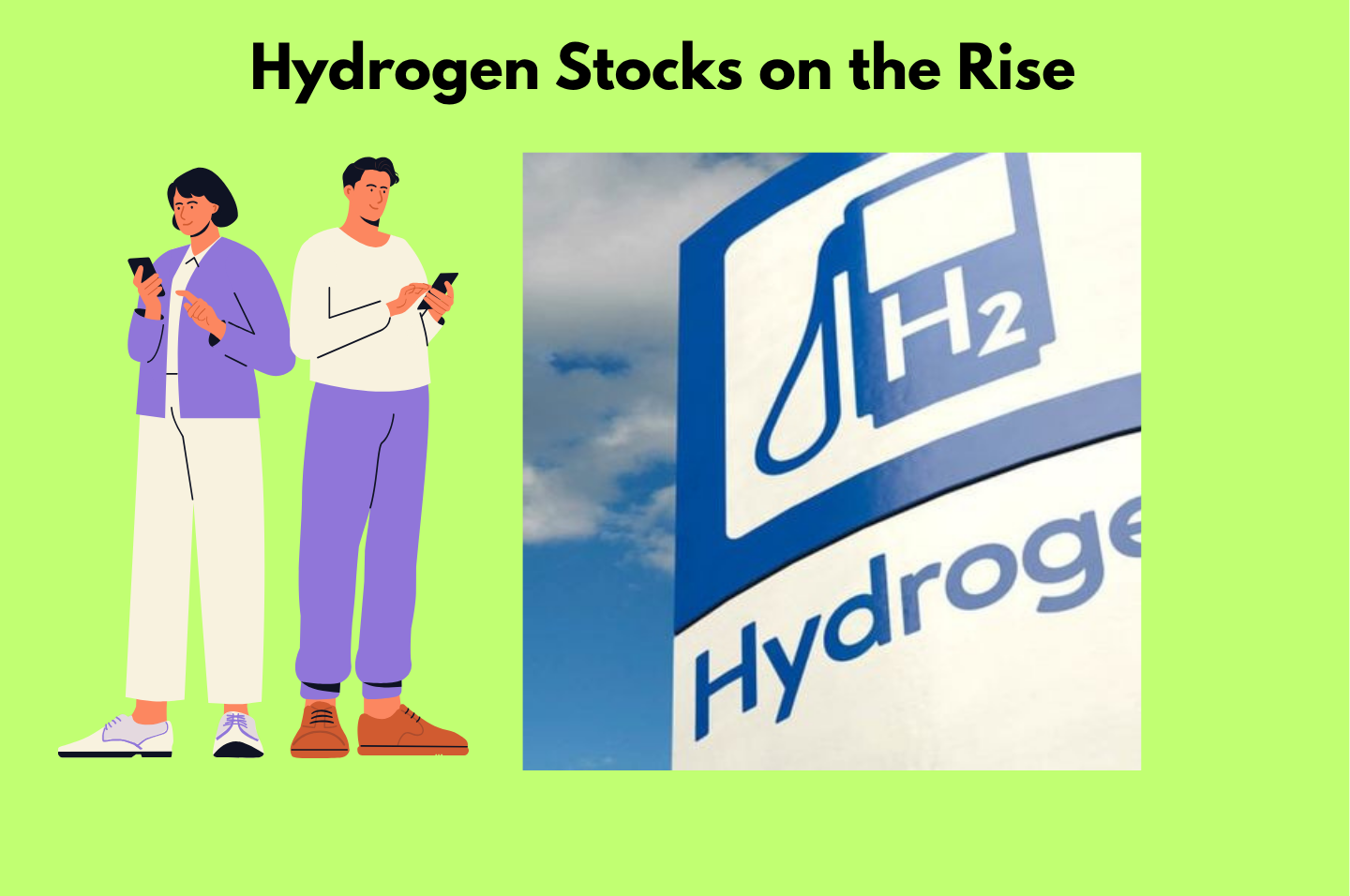As the world shifts towards cleaner energy sources, hydrogen stocks has emerged as a beacon of hope for a sustainable future.
Imagine a world where energy production leaves behind only water vapor—a reality that hydrogen promises to deliver.
This clean-burning fuel is gaining traction, and its impact is being felt across industries, from transportation to manufacturing.
Major companies like Air Products, Plug Power, and Linde are leading the charge, investing billions in hydrogen production and infrastructure.
These investments are not just about environmental benefits; they represent a strategic shift in how we produce and consume energy.
The market is responding positively, with hydrogen stocks showing significant growth as more investors recognize the potential of this emerging sector.
Hydrogen’s role in reducing emissions is central to its appeal.
As industries seek to lower their carbon footprint, hydrogen offers a viable solution, particularly in sectors where traditional renewables can’t easily reach.
This dual role as both a fuel and an energy source positions hydrogen at the heart of the clean energy transition.
With global demand on the rise and technological advancements driving down costs, the future for hydrogen stocks looks promising.
Investors are taking notice, and the time to understand this growing market is now.
Whether you’re looking to diversify your portfolio or support a sustainable future, hydrogen stocks are worth a closer look.

Overview of the Hydrogen Energy Landscape
As global demand for cleaner energy solutions grows, hydrogen stands out as a promising alternative.
Its potential to revolutionize industries and reduce emissions is unmatched.
Hydrogen can be produced in two main ways: blue and green.
Blue hydrogen uses natural gas with carbon capture, while green hydrogen relies on renewable energy for electrolysis.
Policy initiatives are driving this sector’s growth.
Governments worldwide are offering incentives, making hydrogen more viable.
For instance, the U.S. Department of Energy’s Clean Hydrogen Production Standard aims to reduce emissions in production.
Technological advancements are also key.
Companies like Cummins and Air Products are enhancing fuel cell and electrolyzer technologies.
This innovation is making production more efficient and scalable.
Investments in 2023 reached $570 billion, a 31% increase from 2022, signaling strong market confidence.
Hydrogen Stocks on the Rise: What Investors Need to Know
As you explore the evolving energy landscape, understanding the latest market trends becomes crucial.
The surge in hydrogen production has created a ripple effect, influencing stock valuations and investor strategies.
Fluctuations in production costs and demand are key drivers, shaping the investment landscape.
Analyzing US and Global Perspectives
In the US, companies like Chart Industries and Plug Power are leading the charge, with significant investments in hydrogen infrastructure.
Globally, initiatives like expansive production and storage projects are transforming the market dynamics.
These efforts are supported by technological advancements and policy incentives, making hydrogen a viable option for sustainable energy.
Investors are analyzing both US and global market performances, focusing on production trends, technology, and regulatory environments.
For instance, Chart Industries reported a 108% year-over-year sales growth, while Plug Power achieved a record revenue of $891 million in 2023.
These examples highlight the sector’s potential and the factors influencing stock performance.
Risk factors and cost considerations are integral to understanding market dynamics.
While some stocks outperform others, the balance between ROI and risk remains critical. Power and industry demand are evolving, with innovations in hydrogen fuel offering new investment opportunities.
Companies like Cummins and Air Products are at the forefront, providing real-world insights into the market’s trajectory.
In conclusion, the interplay of market trends, technological progress, and policy support positions hydrogen as a promising investment avenue.
By weighing the potential ROI against inherent risks, investors can navigate this rapidly evolving market with confidence.
Leading Hydrogen Companies to Watch
As the clean energy sector evolves, several companies are paving the way in hydrogen innovation.
These leaders are not just shaping the future of energy but setting new benchmarks for sustainability and growth.
Innovative Projects and Market Leaders
Air Products and BP are at the forefront, with Air Products launching a cutting-edge blue hydrogen facility and BP advancing global green hydrogen projects.
These initiatives underscore their commitment to clean energy and scalability.
Plug Power stands out with its expansive hydrogen refueling network, efficiently managing production and logistics.
This strategic approach highlights their role in driving sector growth.
Meanwhile, companies like Bloom Energy and Linde are balancing risk mitigation with sustainable practices.
Their focus on smart investments and technology positions them as key players in the clean energy transition.
By evaluating market performance and future projects, investors can identify opportunities that align with their goals.
These companies exemplify how innovation and strategy are fostering long-term value in the hydrogen sector.
Technology and Production Methods in Hydrogen Energy
Technology plays a pivotal role in shaping the future of energy, and hydrogen stands at the forefront of this transformation.
As industries seek cleaner alternatives, understanding the production methods and technological advancements becomes essential for harnessing this energy source effectively.
Green Hydrogen vs. Blue Hydrogen
Hydrogen production is primarily categorized into two methods: green and blue.
Green hydrogen is produced using renewable energy through electrolysis, making it the cleaner option.
In contrast, blue hydrogen is derived from natural gas with carbon capture technology, offering a bridge to a more sustainable future.
Both methods have distinct cost profiles and environmental impacts, influencing their scalability and adoption.
Advancements in Fuel Cell Technology
Recent innovations in fuel cell technology have significantly enhanced efficiency and reliability.
Analysts highlight that these advancements are reducing production time and costs, making hydrogen a more viable energy source.
Improved storage solutions and plug technologies are also critical, ensuring hydrogen can be a consistent and reliable energy source for various applications.
As the energy landscape evolves, staying informed about these technological developments is crucial for understanding the potential of hydrogen as a sustainable energy source.
Opportunities and Challenges in Hydrogen Investing
Investing in hydrogen presents a complex landscape where opportunities and challenges intertwine.
As you navigate this evolving market, understanding the balance between risk and potential return is crucial.
The sector offers promising growth, driven by technological advancements and policy support, yet it also faces hurdles like fluctuating production costs and regulatory uncertainties.
Risk Factors and Cost Considerations
One of the key challenges is the volatility in production costs, which can significantly impact investment returns.
Fluctuations in energy prices and market demand add layers of complexity, making it essential for investors to evaluate these factors carefully.
Additionally, the high initial investment required for hydrogen infrastructure can be a barrier, despite the long-term benefits it promises.
Despite these risks, the potential value of hydrogen investments is substantial.
With proper planning and a clear understanding of the market dynamics, investors can mitigate risks and capitalize on emerging opportunities.
The sector’s growth trajectory suggests that the rewards may well outweigh the challenges for those who enter the market strategically.
Regulatory Dynamics and Future Trends
Regulatory changes play a pivotal role in shaping the future of hydrogen investing.
New policy initiatives and government incentives are creating a more favorable environment for investors, driving innovation and adoption.
As global demand for clean energy solutions grows, hydrogen is positioned to become a cornerstone of the energy transition, offering a sustainable alternative to traditional fuels.
In conclusion, while the hydrogen market presents its share of challenges, the opportunities for growth and innovation are undeniable.
By staying informed about regulatory developments and market trends, investors can make informed decisions that align with their goals and risk tolerance.
The future of hydrogen is bright, and those who navigate its complexities today may reap significant rewards tomorrow.
Conclusion
In conclusion, the growth of clean hydrogen as a sustainable energy solution is driven by innovation and supportive policies.
This sector offers a strategic way for you to invest in a future powered by clean energy.
Technological advancements in fuel cell technology and production methods are key factors making hydrogen energy more accessible and efficient.
While opportunities abound, it’s important to weigh the risks, such as cost fluctuations and market volatility.
Investing in hydrogen energy requires a balanced approach, considering both the potential returns and challenges.
Staying informed about industry trends and regulatory changes will help you make smarter decisions.
As you explore this evolving market, remember that clean hydrogen is not just a trend—it’s a transformative force in the global energy landscape.
By adapting your strategy and staying updated, you can navigate this sector with confidence.
The future of energy is here, and clean hydrogen is leading the way.
FAQ
How is the hydrogen market growing, and what drives its expansion?
The hydrogen market is expanding due to increasing demand for clean energy solutions.
Governments worldwide are implementing policies to reduce carbon emissions, making hydrogen energy a key player in the transition to renewable energy sources.
Additionally, advancements in fuel cell technology and green hydrogen production are attracting significant investment.
What are the main risks associated with investing in hydrogen stocks?
The primary risks include high production costs, infrastructure challenges, and competition from other renewable energy sources like solar and wind.
Additionally, the price volatility of hydrogen stocks can be significant due to market speculation and technological uncertainties.
Which companies are leading the hydrogen energy sector?
Companies like Plug Power, NextEra Energy, and Air Products and Chemicals are at the forefront of the hydrogen industry.
These firms are investing heavily in hydrogen fuel cell technology and green hydrogen production to meet growing demand.
What is the difference between green and blue hydrogen?
Green hydrogen is produced using renewable energy sources like wind or solar power, making it a cleaner option.
Blue hydrogen is produced from natural gas but uses carbon capture technology to reduce emissions.
While both are considered cleaner than traditional hydrogen production, green hydrogen is more environmentally friendly.
Is now a good time to invest in hydrogen stocks?
The hydrogen energy sector is gaining momentum, with many analysts predicting strong growth. However, it’s important to evaluate your investment goals and risk tolerance.
Consider the market trends, company fundamentals, and technological advancements before making a decision.




